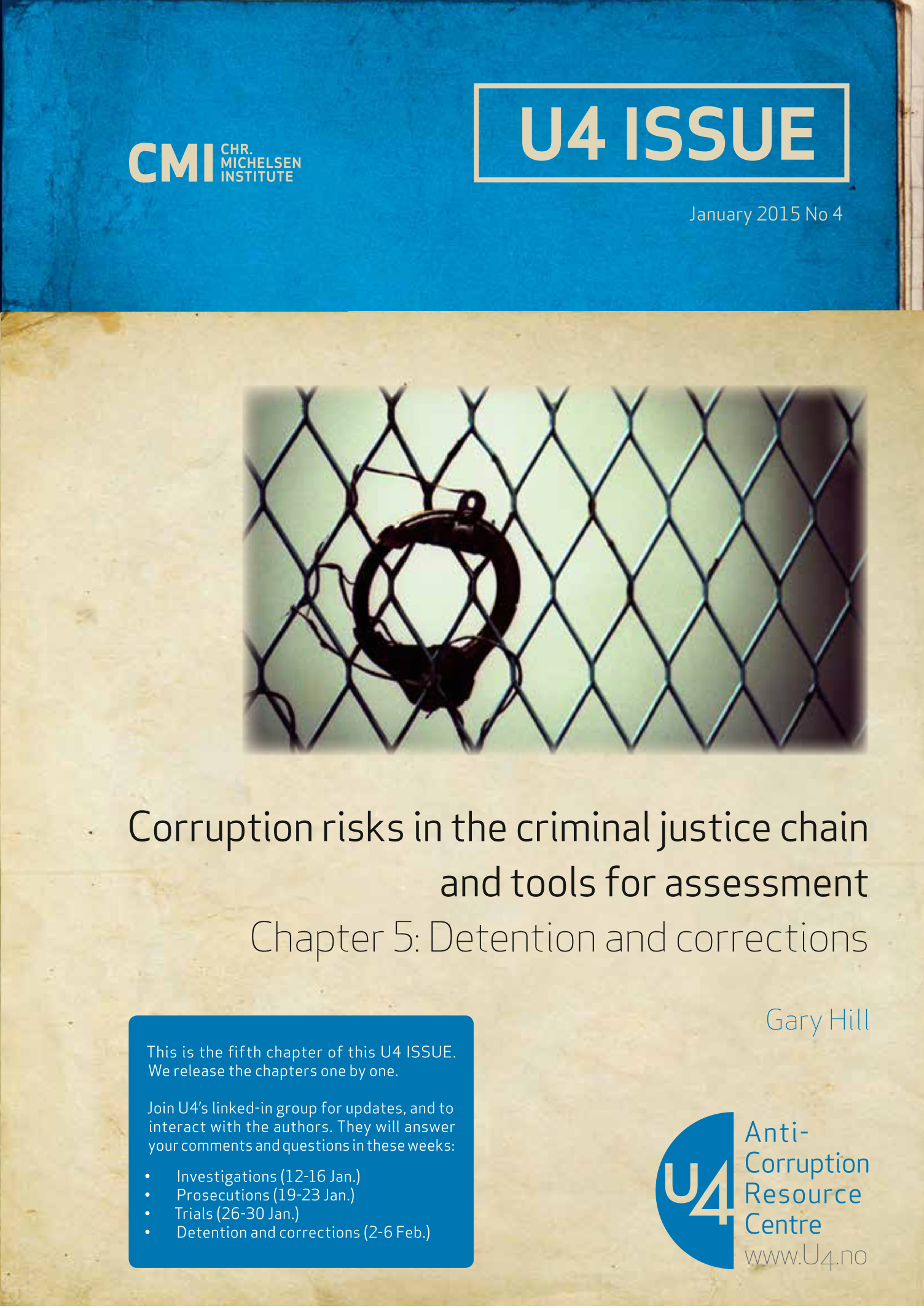U4 Issue
Corruption risks in the criminal justice chain and tools for assessment. Chapter 5: Detention and corrections
This chapter provides a general overview of the corruption risks in detention and corrections phase of the criminal justice process. Many prisons operate outside of meaningful public scrutiny. That, coupled with the subservient position of prisoners, the discretion correctional officers enjoy, and the anxiety of inmates’ families and friends create an environment in which corruption risks are high. While there is extensive literature on the management of correctional institutions from the perspective of efficiency, only few comprehensive assessments of corruption risks in specific correctional systems such as in the Philippines and South Africa have been attempted. New research is needed to develop systematic tools for assessment of corruption risk in corrections. Hypotheses from professional opinions such as those cited in this paper are empirically testable, and results could be quickly incorporated into useful advice for correctional administrators.
Join U4’s linked-in group for updates, and to interact with the authors. They will respond to your comments and questions in these weeks:
• Investigations (12-16 Jan.) Jay Albanese
• Prosecutions (19-23 Jan.) Heike Gramckow
• Trials (26-30 Jan.) Victoria Jennett
• Detention and corrections (2-6 Feb.) Gary Hill

Cite this publication
Hill, G. (2015) Corruption risks in the criminal justice chain and tools for assessment. Chapter 5: Detention and corrections. Bergen: Chr. Michelsen Institute (U4 Issue 2015:4) 14 p.
Disclaimer
All views in this text are the author(s)’, and may differ from the U4 partner agencies’ policies.
This work is licenced under a Creative Commons Attribution-NonCommercial-NoDerivatives 4.0 International licence (CC BY-NC-ND 4.0)


